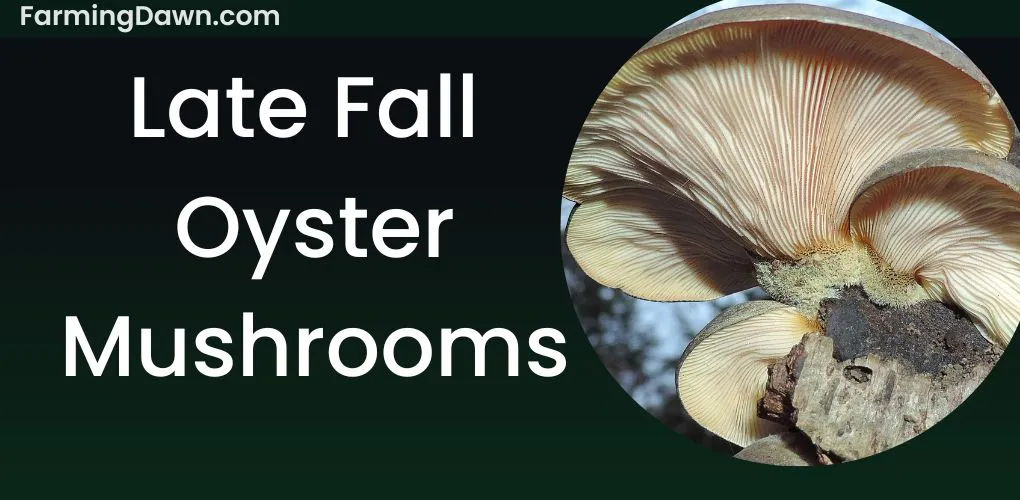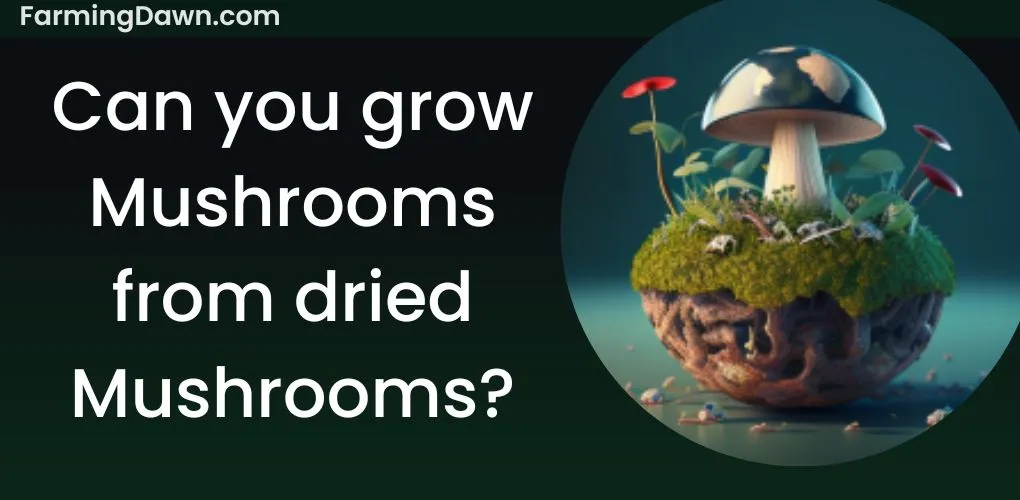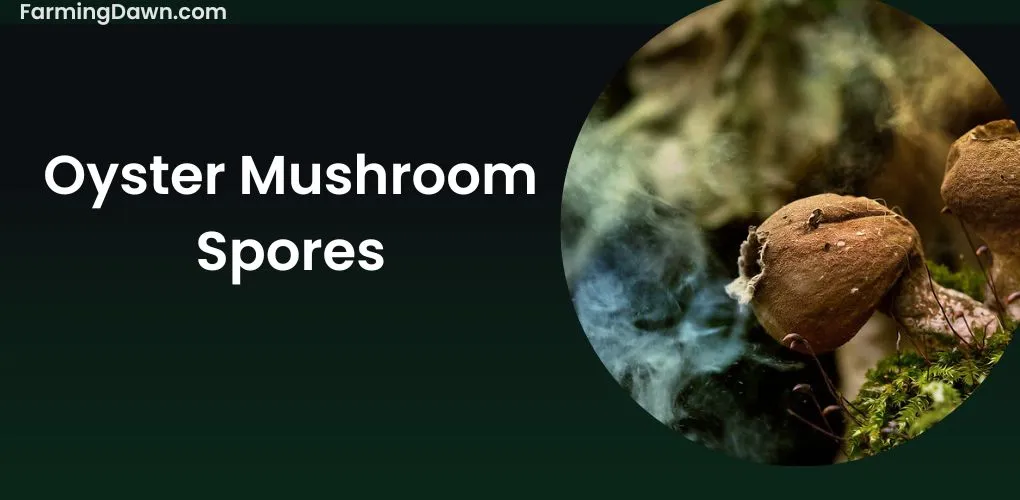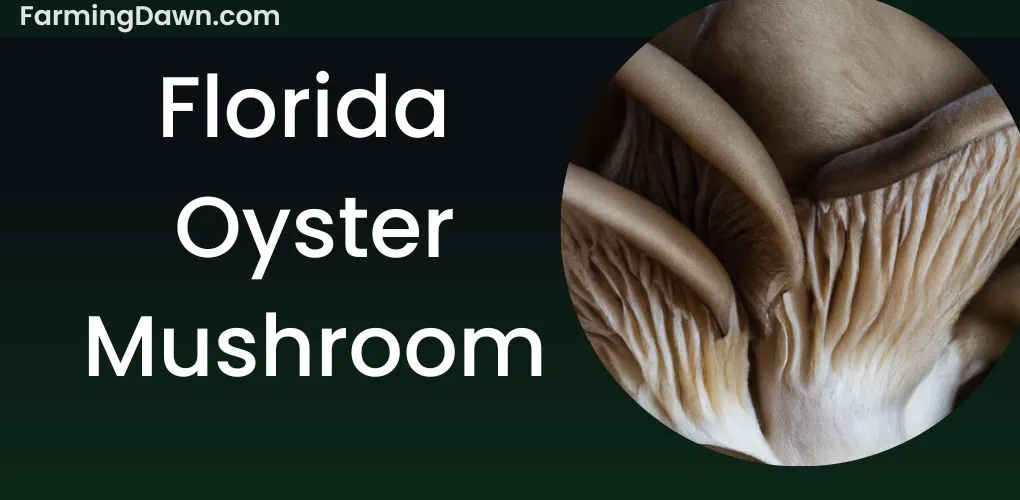As the leaves begin to fall and the temperatures drop, a new crop emerges in fungi: the Late Fall Oyster mushroom. With a flavor profile that spans from delicate and nutty to meaty and earthy, these delectable and adaptable mushrooms are a favorite among chefs and gardeners. But what exactly are Late Fall Oyster mushrooms, and why are they so sought after during this time of year?
Today I will give a complete overview of these fascinating mushrooms, their origin, traits, growth habits etc.
What are Late Fall Oyster Mushrooms?
Oyster mushrooms are nothing new to most of us. They are popular due to their delicate flavor and meaty texture and are frequently seen in supermarkets and farmer’s markets. Yet, the Late Fall Oyster Mushroom is a unique variation that deserves a closer look.
- Identification
Let’s start by discussing how to recognize them. These mushrooms have a distinctive fan-like shape, with a stem that attaches to the cap on the side rather than the center. It is one of the bigger mushroom species, with a cap that is typically grayish-brown in color and that can go up to 10 inches wide.
- Growth habits
Late Fall Oyster Mushrooms Usually found on dead or dying hardwood trees, such as Teak, Sapele or beech. They frequently grow in groups on the trunk or limbs of a tree and like cool, damp weather. As the name suggests, they appear in late fall, normally around October or November.
- Nutritional Aspects
So, why are these mushrooms so special? They are highly nutritious, to start with. There are few carbohydrates and fats in oyster mushrooms, but it is a rich source of protein, fiber, and B vitamins. Another reason I love these mushrooms is their versatility in the kitchen. They go nicely with various recipes thanks to their delicate, slightly sweet flavor.
But perhaps the best thing about Late Fall Oyster Mushrooms is that they’re free. They can grow on a dead tree in your backyard, or you can go foraging for them in the woods. When you begin harvesting, complete your homework and understand how to recognize them correctly.
Are late fall oysters edible?
Late fall oyster mushrooms are indeed edible and highly sought after by enthusiasts for their delicious flavor and meaty texture. These mushrooms, also known as winter oyster mushrooms, grow from late fall to early winter and on dead or decaying hardwood trees.
What does a Late fall oyster mushroom look like?
Oyster mushrooms in the late fall have a white to light gray color, with flat, fan-shaped caps that can reach a diameter as large as 10 inches, and the cap is white to light gray or brownish-gray colored.
In addition to its smooth, velvety surface, the cap often has a slightly wavy margin. It has white to pale gray gills inside the cap that run down the stem, often off-centred and white or gray.
The mushroom’s cap may become more convex as soon as it marches towards maturation, and the gills will turn a light pink or lilac color. The mushroom’s flesh is soft and spongy and has a delicate, nutty flavor.

Comparison to other oyster mushroom varieties
Late fall oysters have a more intense, nutty flavor than other oyster mushroom varieties. Also, because of their meaty texture, they make a fantastic meat alternative in meals like stir-fries and stews.
Another thing to consider is availability. Late fall oysters are a well-liked option for fall and winter cuisine because, as their name implies, they tend to grow in the later months of the year. Other oyster mushroom species, including pearl oysters, grow year-round and can be found in most supermarkets.
Regarding nutritional value, late-fall oysters are a great source of protein, vitamins, and minerals. They are a healthy option for any diet since they contain beta-glucans, which have been demonstrated to have immune-boosting qualities.
Lastly, let’s talk about growing conditions. Late-fall oysters prefer cooler temperatures and high humidity, making them a great choice for growers in a cooler climate. Other oyster mushroom species, including the pink oyster, do better in warmer areas and are a better option for growers.
Late Fall Oyster Mushroom Lookalikes
There are many mushrooms similar to late fall oyster. Some of them are following:
- Jack-O’-Lantern Mushroom (Omphalotus illudens)
- False Chanterelle (Hygrophoropsis aurantiaca)
- Black Trumpet Mushroom (Craterellus cornucopioides)
- Angel’s Wings (Pleurocybella porrigens)
- Deadly Galerina (Galerina marginata)
- Sulphur Shelf (Laetiporus sulphureus)
- Blackening Polypore (Meripilus sumstinei)
- Matsutake Mushroom (Tricholoma magnivelare)
- Shaggy Parasol (Chlorophyllum rhacodes)
- Orange Mycena (Mycena leaiana)
- Wine Cap (Stropharia rugosoannulata)
- Honey Mushroom (Armillaria mellea)
- Blewit Mushroom (Clitocybe nuda)
- Artist’s Conk (Ganoderma applanatum)
- Velvet Foot (Flammulina velutipes)
While these mushrooms look like late-fall oysters, some can be poisonous and not always suitable for eating, so be careful while forgiving these beautiful fungi.
Can I grow late-fall oyster mushrooms?
If you put your mind to it, you can grow almost anything. Late fall oyster mushrooms are no exception, and they can be grown year-round with a bit of effort and know-how. Many companies are growing these beautiful fungi in their warehouses, like North Spore, Mushroom Media Online and The Mycelium Emporium.
But when it comes to growing oyster mushrooms in the late fall, there are a few things you’ll want to keep in mind, like temperature, humidity, air circulation, suitable substrate, mushroom spawn etc.
Note: If you’re wondering how to grow late-fall oysters in your garden. I have a complete guide for the next step.
How to Grow Late Fall Oyster Mushrooms?
Oyster mushrooms are some of the easiest mushrooms to cultivate, and they grow exceptionally well during the fall season. Let’s start with the basics so that even a novice can understand the procedure.
- Select a suitable Substrate
To grow late-fall oyster mushrooms, you must start by selecting a suitable substrate. I recommend using straw as it is readily available, inexpensive and provides a great growing medium for the mushrooms.
To pasteurize the straw and remove pollutants, it must be carefully cleaned and soaked in hot water. You can then add mushroom spawn to it once it has cooled.
- Add Mushroom spawn
Mushroom spawn is essentially the vegetative development or mycelium of the mushroom, which will eventually result in the fruiting bodies (mushrooms) we eat. You can purchase mushroom spawn from any grocery store or nursery. Make sure the spawn you choose is appropriate for oyster mushrooms.
- Compress it tightly
After you have added the spawn to the straw, you can then pack it tightly into a suitable container. A high humidity level of about 90% must be maintained for the mushrooms to grow best. To accomplish this, place a plastic sheet over the container or a lid with holes in it.
- Maintain temperature 20-30 degree Celsius
Oyster mushroom growth requires a temperature range of 20 to 30 degrees Celsius. Thus, it’s crucial to keep the growing environment’s temperature steady. To accomplish this, utilize an incubator or a heating pad.
- Provide air circulation
Maintaining excellent air circulation is crucial as the mushrooms begin to grow in order to stop the development of dangerous bacteria and mold. This can be accomplished by occasionally opening the container’s cover or by employing a tiny fan.
- Harvest
Once the mushrooms have reached their maximum size, you can harvest them by chopping off the stem around the base of the mushroom. The greatest time to pick oyster mushrooms in the late fall is while they are still young and firm. You can store them in a cold, dry location when ready to use.
How long do oyster mushrooms last?
To determine how long your oyster mushrooms will last once they have been harvested, there are a few factors that need to be taken into consideration.
Mushroom freshness is one of the most crucial elements. Local growers or farmer’s markets are a great place to find them fresh! They ought to keep well in the refrigerator, and can last for a week or two if you keep them there.
However, if you’re buying your oyster mushrooms from a grocery store, they may have already been sitting on the shelf for a few days. In this scenario, the best time to use them is 2-3 days after purchase. Obviously, if you notice any signs of spoilage (such as a slimy texture or funky smell), you should throw them away.
Like most fresh produce, oyster mushrooms must be stored properly to maintain freshness and flavor. Maintaining a cool and dry environment is key. The best way to store oyster mushrooms is to place them in a paper bag or a container with a paper towel on the bottom to remove any extra moisture.
After that, you simply need to pop them into the refrigerator, and you’re all set! You can also try drying your oyster mushrooms to extend their lifespan. Dried oyster mushrooms can last for months when stored in a cold, dry location in an airtight container.
How to cook late fall oyster mushrooms?
Here’s a simple recipe for cooking oyster mushrooms that you can try:
Ingredients:
- 1 pound of oyster mushrooms
- 2 tablespoons of olive oil
- 2 cloves of garlic, minced
- Salt and pepper, to taste
- Fresh parsley, chopped (optional)
Instructions:
STEP 1: If dirt or debris is present on the oyster mushrooms, wipe them clean with a damp paper towel or soft-bristled brush. Get rid of the woody stems by trimming them off. Make bite-sized pieces out of the caps.
STEP 2: Over medium-high heat, place a large skillet on the stovetop. Sauté the garlic for 30 seconds or until it is fragrant after adding the olive oil and minced garlic.
STEP 3: Once the garlic-infused oil has been added to the skillet, add the oyster mushrooms and toss them to coat them. Then season the dish with salt and pepper according to your taste.
STEP 4: The mushrooms should be cooked for 5-7 minutes at medium heat, occasionally stirring, until they are tender and lightly browned. And here your late fall oyster recipe is ready.
Upon serving, garnish with fresh chopped parsley (optional) and serve the dish immediately.
Late fall oyster Mushrooms: Conclusion
There is nothing quite like the late fall oyster mushroom in the natural world. Because of its meaty stem and delicate fan-shaped cap, it is a versatile ingredient in the kitchen. While also being a favorite among chefs and foodies for its earthy, nutty flavor.
The season is drawing to an end, so let us savor the last of these tasty mushrooms while we can. I hope that this article covered all your questions related to late fall oysters. Now, it is your turn to implement the instructions I gave above. If you have any other queries, ask me in the comment. Thank you!
Each mushroom has its growth habit and traits. Read my other articles to learn more:






